Plenty O’ Pumpkins
November 16th, 2011
The pumpkin is a native American squash, beloved for centuries for its sweet flesh and savoury seeds. American Indians dried strips of pumpkin during the fall harvest for use through the winter. Today, thanks to canning and freezing, we can eat pumpkin whenever we please. But for me, pumpkin is one of the few foods — like hot apple cider — that retains its exclusively fall appeal. And suddenly it’s pumpkin season!
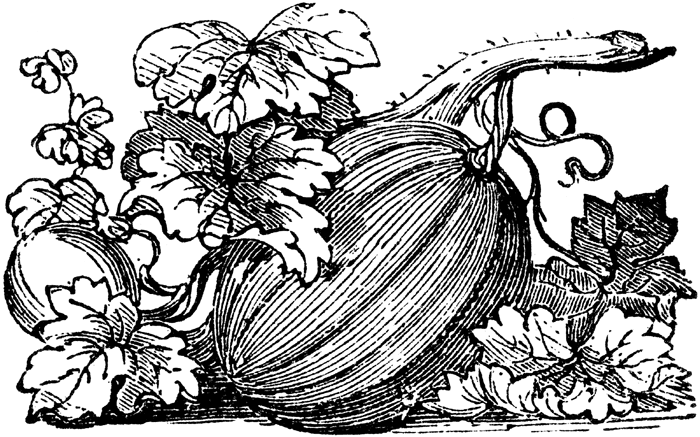
In the past few days, I’ve found myself nearly swimming in pumpkin. Yesterday it was a slice of pumpkin pie with whole wheat crust at lunch and criminally decadent pumpkin and coconut ice cream (two different flavors sharing the same bowl) after dinner. Tonight, I treated myself to a box of fresh pumpkin ravioli from Raffetto’s* to go with the rest of my homemade sun-dried tomato pesto and a bottle of Wild Horse central coast pino noir that pairs perfectly with sweet and savoury.
And I mustn’t forget the two sweet pie pumpkins waiting in my larder to become Thanksgiving dessert. Needless to say, there are a number of pumpkin pie receipts from the mid-19th century. I’ve got my research homework cut out for me this weekend.
*Raffetto’s is a small, family-owned Italian food store on West Houston Street that has been supplying Greenwich Village with delectable fresh pasta for more than 100 years. They’re still going strong and tasty, one of the few holdovers from the early 20th century when Little Italy stretched north to the south eastern section of the Village. If you’re in New York, or planning a visit, you owe yourself a taste!
Salmon Croquettes
October 9th, 2011
If there’s one thing I’ve learned over the years, it’s to be resourceful. When life leaves you with massive amounts of left-over baked salmon, make croquettes!
Before this week, I was well acquainted with croquet, but not so much with croquettes. I’m not sure if the relation between the two words goes any further than their obvious homographic tendency, but I now have a full appreciation for the latter. Thanks to Feeding America, I found this receipt in a cookbook compiled from reader submissions to The Los Angeles Times, published around 1905:
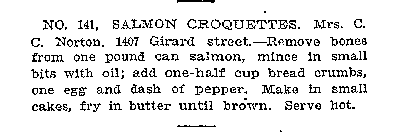
The bread crumbs were a bit tricky, as the only thing remotely akin to bread that I had on hand was a box of Swedish rye crisps. But a few minutes in the food processor did the trick. They were dry though, and I think I may have had more than a pound of salmon — I had to add an extra egg to make it all stick together. I used paprika instead of pepper and threw in a few minced scallions for good measure (one of the salmon croquette receipts I didn’t use, because it called for cream, included paprika, another called for scallions).
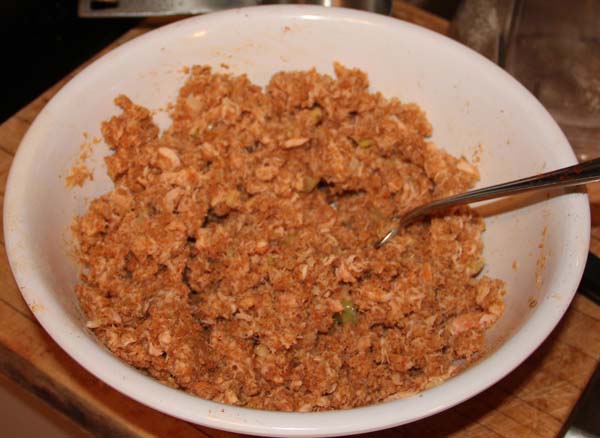
The mixture was very light and fluffy. I shaped it into little cakes and fried them in butter. My kitchenette smelled incredible as they began to heat through — the rye from the crackers adding to their fragrance.
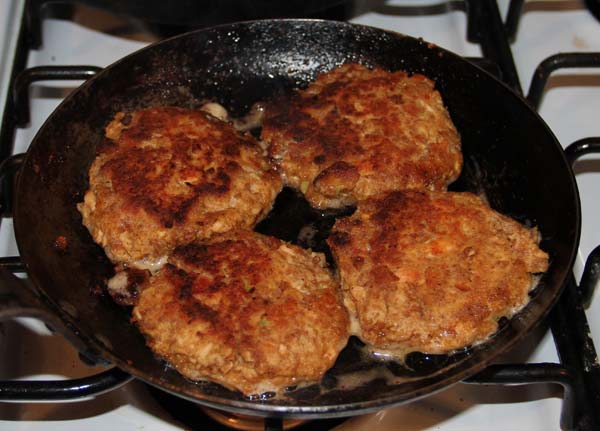
I’m pleased to report that they were delicious. Very light, almost airy, and delicately flavored. Not fishy at all. We ate them over nutty short grain brown rice with lightly steamed asparagus.
Shoo-Fly
September 26th, 2011
The September meeting of the New York Nineteenth Century Society is tonight, and we are each tasked with bringing something representative of our heritage. Most of my family has been in America for too long to have any colorful folk costumes, so I decided to bring something edible. At first I was leaning towards my great-great-grandmother’s Scotch shortbread, but I’ve never made it before. I finally chose Shoo-Fly Cupcakes, from my Pennsylvania Dutch great-grandmother, Carrie Dougherty, née Yonker.

Flavored with molasses and topped with butter crumbs, these moist little cakes are a perfect fall treat. My mother used to make them every year after we went apple picking, to go with steaming bowls of homemade spiced applesauce. Shoo-Fly Pie is a Pennsylvania Dutch tradition. Many people think of Shoo-Fly as a gooey, molasses flavored pie filling. But our family has always made the cake version.
Like many Pennsylvania Dutch treats, it uses simple, cheap ingredients to create a surprisingly sinful taste. Here’s our top-secret family recipe.
Carrie Yonker’s Shoo-Fly Pie
4 Cups Flour
1 Cup Sugar
1 Cup Butter
1 Cup Cold Water
1 tsp Cream of Tartar
1 tsp Baking Soda
1 Cup MolassesSift flour and sugar together. Rub in butter until it’s fine and crumbly. Reserved 1 cup of crumb mixture for topping. Dissolve cream of tartar and baking soda in cold water. Mix water and molasses into flour crumb mixture. Stir until blended. Fill muffin tins and sprinkle with reserved topping. Bake at 350 degrees for 20-25 minutes, or until just done. Don’t over bake, or they will be dry. Makes 24 cupcakes.
And here’s a nearly-19th century version, from Mary At The Farm And Book Of Recipes Compiled During Her Visit Among The “Pennsylvania Germans,” Edith M. Thomas, 1915:
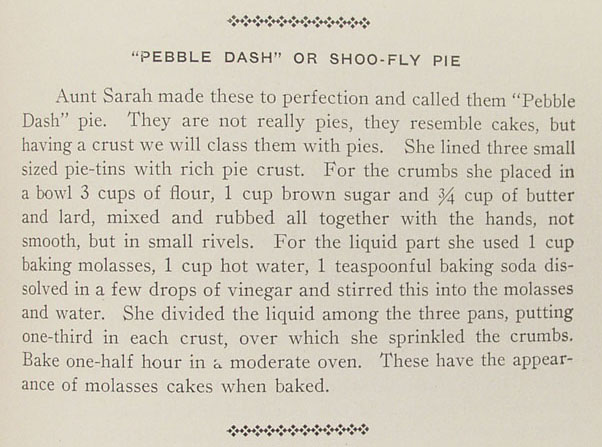
Actually, I guess Carrie Yonker’s Shoo-Fly recipe goes back just as far — if not further. She was already married and a mother by 1915.
Nobody seems to know how Shoo-Fly got its unusual name, but there was a song published in 1869 called “Shew Fly, Don’t Bother Me.” I’m not going to repeat the words here, but you can probably find them online with a very little trouble. Or content yourself with this more recent tune, featuring Shoo-Fly Pie:
Pea Soup
September 17th, 2011
Earlier this week, I made a gigantic pot of ‘French Green Pea Soup’, from a receipt originally published in Eliza Leslie’s 1840 masterpiece, Directions For Cookery, In Its Various Branches. I found the digitized book on one of my favorite websites, Feeding America: the Historic American Cookbook Project.
This yielded nearly two gallons of soup. I didn’t intend to make quite so much. But I made the mistake of following the quantities as written, and ended up with enough to feed the average mid-19th century household or a small army.
It was an astonishingly easy receipt and required very little adaptation. I started with four bags of frozen green peas — approximately a quart each, or maybe a little more — and two sweet onions.
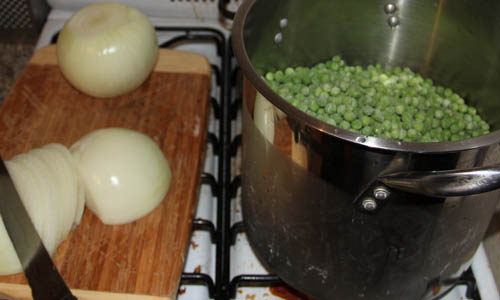
I threw in generous handfuls of fresh herbs: mint, marjoram, and basil.

Then I covered the peas, onions, and herbs with as much water as the pot would hold. It called for a full gallon, but there wasn’t quite room to put it all in. Makes you wonder about pot sizes in 1840…
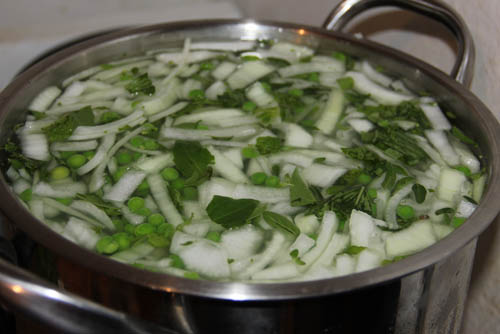
Such a large pot of soup took a long time to boil. But once it did, I turned it down and let it simmer uncovered until the peas fell apart. Then I cheated and resorted to my immersion blender. By rights, I should have mashed the peas against the side of the pot. I rather messed up the spinach part by choosing frozen spinach, which behaved more like an additional herb than would have the juice from fresh spinach. And I forgot to strain the soup too — though I have a feeling that step was rendered less necessary by use of the immersion blender. The butter rolled in flour seems like a shortcut to a roux. I usually make vegetable soups without additional thickening, but the butter was a nice addition.
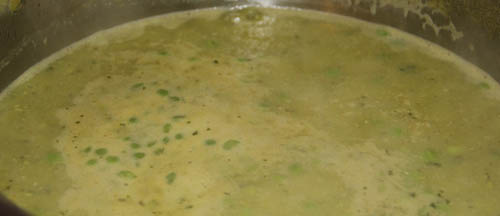
And the result — thoroughly unappetizing in a photograph, but surprisingly delicious; with a pleasant kick, thanks to the cayenne pepper. I think I will try this again, perhaps quartering the ingredients, and sticking closer to the original methods (fresh peas, fresh spinach, no electric blenders, etc.).
Let ’em Eat Cake
September 10th, 2011
Tonight, over dinner (in a restaurant — I’m staying clear of the kitchen for a while), I totted up how much baking I’ve done this week. 196 tart shells and 225 cupcakes later, I think I’m ready for a break.
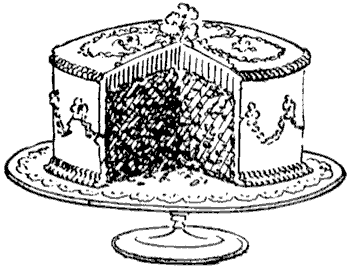
In case you’re curious, here is my cupcake receipt, from a reprinted edition of the “Everyday Cookbook” from Lord & Taylor, circa 1865. I don’t have the original text, so the following is in my own words.
California Cake
Two cups sugar
1 cup butter
1 cup milk
Two eggs, slightly beaten
1 tablespoon baking powder
3 cups sifted flour
Flavoring, fruit, or nuts to tasteCream butter and sugar. Beat in eggs, milk, and flavoring. Sift flour and baking powder. Beat flour into wet ingredients in three parts, beating until smooth between each addition.
Bake at 350 until done. Makes 2 cakes or 75 mini-cupcakes.
I have no idea what makes this cake particularly Californian. It’s very good though. Moist, yet light, with a surprisingly coarse crumb. My favorite flavoring is rosewater and cinnamon. But vanilla or almond is nice too. I’ve made it into a few layer cakes (with raspberry jam in the middle) over the years, but usually stick to cupcakes. Regardless of shape, size, or historical accuracy, my favorite icing for California Cake is butter-cream. Rosewater butter-cream. Yum! Like eating a bouquet or drinking a bottle of perfume. But in a good, non-poisonous way.
« Newer Posts — Older Posts »
